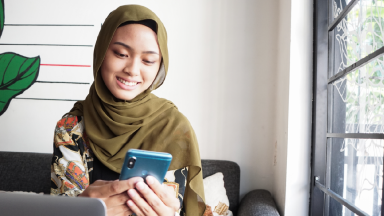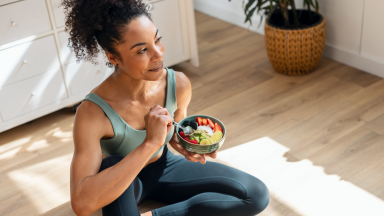The need for increased representation in media across identity groups isn’t new, but progress across groups is far from universal. For people with disabilities, representation remains low, and progress over the years might appear slow at best.
When CODA won the Academy Award last year for Best Picture, for example, it introduced broad audiences to the power of authentic storytelling about children of deaf parents. But at the same time, it highlighted just how limited equitable representation is in films. That’s because Marlee Matlin, who is one of the stars in the film, also won the award for Best Actress for her role in the 1986 film, Children of a Lesser God—the last time the Oscars celebrated the disability community.
The 35-year gap, bookmarked by films involving the same actress and the same disability theme, highlights how equitable disability inclusion very much remains an off-in-the-distance aspiration. Authenticity is the other key consideration, and not all productions benefit from the involvement of Matlin, who is a longstanding champion of authentic portrayals in TV and film, opening the door for new talents such as Alaqua Cox and Lauren Ridloff.
Today, people with disabilities are 34% more likely than the general population to feel there isn’t enough inclusion of their identity group in media, and more than half say the portrayals they see inaccurately represent their individual identity groups. For perspective, 26% of the U.S. population is living with disabilities.
Inclusion in content is increasing, but from a low base
The volume of disability-inclusive content has increased over time, albeit from a very low base. About a century ago, there was only one video production featuring a disability theme. Since then, disability inclusion has grown, peaking in 2019, when 518 productions were released. Through this year, 6,895 video titles have disability thematic attributes, but that represents just 4.22% of the 163,230 titles with descriptor metadata.
Among the video content available, disability representation is highest in feature films, accounting for just under 60% of the video content with disability themes. Of the video content that includes video descriptors, only 4% have descriptors noting disability and disability-related attributes. When you exclude previews and sports and combine the film categories, film accounts for just under 81% of disability-inclusive content and series/miniseries account for just over 19%.
Increasing inclusion across media is important, but when it comes to media consumption, Americans spend the most time with live TV—almost twice the time they spend with connected TV. With just under 20% of series/miniseries content inclusive of disability themes, it’s not surprising that nearly 50% of people with disabilities feel their identity group is underrepresented on TV.
Importantly, the simple presence of a character with a disability isn’t enough. People living with disabilities want to see the authentic realities of everyday life depicted in content. Notably, our most recent Attitudes on Representation on TV Study found that people with disabilities are 52% more likely than the general population to say the portrayal of their identity group is inaccurate.
For context about the importance of inclusivity and authentic representation, consider the disability community’s views about ads that appear during inclusive programming and ads that feature people with disabilities: the community is 17% more likely to engage with the brand when the ad is placed within inclusive content and features people from the disabled community.
And while people with disabilities believe streaming has the most inclusive options, 24% see no difference in relevant representation from platform to platform. There is also no single genre that stands out as one that best showcases disability representation.
With sparse video content to meet the desires of the community, it’s not surprising that people with disabilities are increasingly gravitating to social media—and its influencers—to find stronger connections with their communities, build relationships, spread awareness and live their true lives. And the engagement rates are evidence that influencers are filling a significant gap.
For example, our recent influencer marketing report found that only 6.15% of influencers on Instagram have an engagement rate of 20% or more. Alyssa Cleland, however, has amassed 140,000 Instagram followers and her posts generate an impressive 67% engagement rate. Terra Jolé tops the follower list, with 918,000.
The other important aspect related to influencer marketing is that Nielsen’s Q1 2022 Brand Impact norms data found that an average of 80% of people who saw an influencer ad was able to recall seeing brands featured in ads. The data also highlights that the ads drive a 9-point increase in both brand affinity and purchase intent.
Much in the world changed between the releases of Children of a Lesser God and CODA, but the data pertaining to inclusion and representation across identity groups suggests that true progress in mainstream media remains elusive.
That lack of progress has an impact on media consumption, as our 2021 Attitudes on Representation on TV found that 48% of respondents would be more likely to watch content featuring their respective identity groups. Not only is the audience looking for more representative content; the audience is looking for the industry to re-frame how disability is depicted in that content. With that in mind, movies like CODA need to be more in focus than just once every 35 years if media is to become more inclusive of the disability community.
Notes
- Nielsen Attitudes on Representation on TV Study, April 2022
- Centers for Disease Control and Prevention
- Gracenote Video Descriptors
- Gracenote Video Data
- Nielsen InfluenceScope



